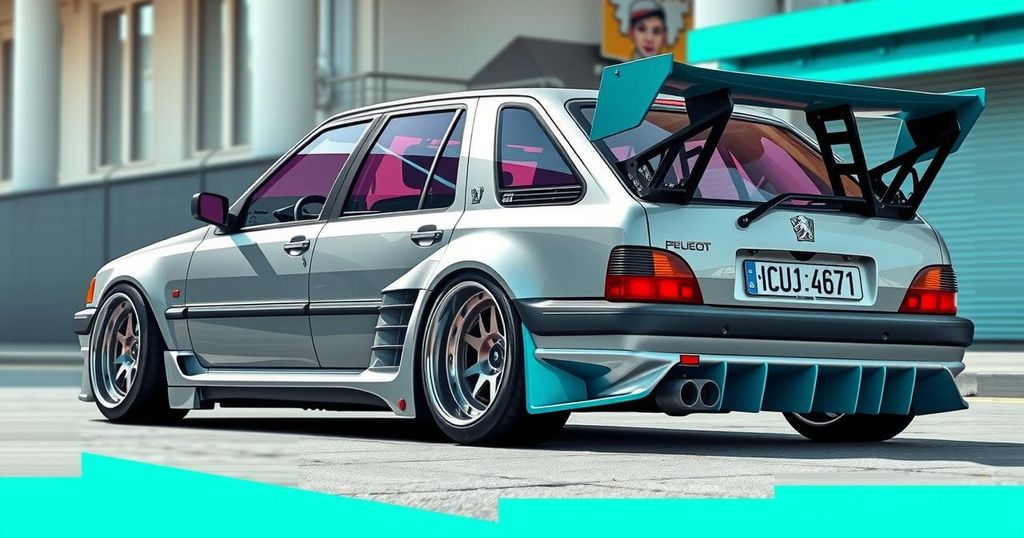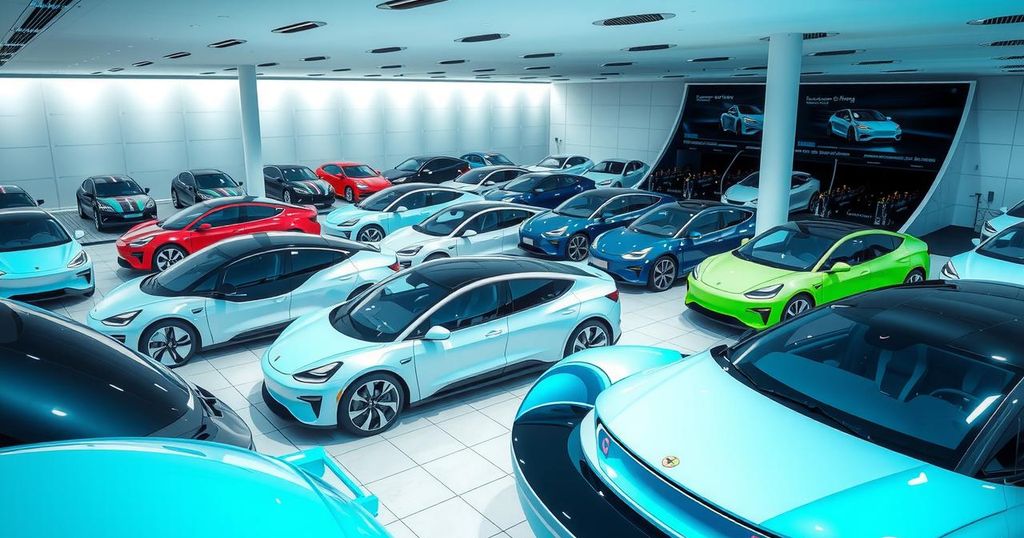The Unique Tuning Culture of the Peugeot 405 in Iran
Iran’s car culture, especially surrounding the Peugeot 405, showcases a vibrant tuning scene characterized by modified vehicles with higher rear ends—a departure from common trends found in other countries. The Peugeot 405, produced locally for decades, remains popular among enthusiasts who often enhance performance through various modifications while retaining a stock-like exterior. This culture reflects a unique blend of practical needs and creative expression that connects car lovers across the globe.
In the realm of automobile culture, each nation tends to craft its own distinct flavor. While Americans flaunt muscle cars and Australians lean into rorty V8 sedans, Iran has carved out a curious niche with a focus on the Peugeot 405. This particular model, surprisingly popular in the Iranian automotive scene, has developed a unique tuning style that is not often seen in other countries.
The Peugeot 405, which first hit the production lines in France in 1987, found its way to Iran with an assembly factory opening in 1992. Remarkably, the production of a version nicknamed Peugeot PARS persisted until last year. Although it underwent various updates, including newer engines and a revamped front design similar to the 406, it ultimately lost its place amid fierce competition from modern Chinese cars.
The longstanding affection for the Peugeot 405 has led to a significant presence of the model on Iranian roads. It has woven itself into the fabric of local car culture, including the custom aftermarket scene. Despite the challenges of finding high-quality visual documentation, recent video footage provides a glimpse into this peculiar car community, especially around the iconic Peugeot models.
I managed to communicate with a local enthusiast named Shayan, who reached out after seeing previous coverage. He commented on the car’s enduring popularity: “To be honest, we in Iran really like the Peugeot 405. Even though it has been 37 years since this car entered Iran, all young and middle-aged people are interested in this car.” He also shared a collection of images showcasing car culture from his vantage point.
In the hierarchy of Peugeot trims, the GLX stands out as a prized variant. Shayan described the GLX as “a very beautiful version of the 405” thanks to its enhanced engines like the XU9 and XU7 L3. The popularity of these engines for modifications is well noted, especially since the GLX featured an appealing cream dashboard for vehicles manufactured between 2010 and 2013, further endearing it among local enthusiasts.
The XU7 L3 engine is a 1.8-liter inline-four, providing 100 horsepower. While not particularly powerful, Iranian tuners have maximized the potential with modifications such as upgraded intake systems, filters, and exhausts. Some enthusiasts even achieve extraordinary performance levels, with Shayan mentioning installations that can yield up to 700 horsepower through advanced tuning techniques.
From the GLX, the later Pars ELX version has also gained traction in the tuning community. With its 1.9-liter XUM engine capable of producing 105 horsepower, it remains a frequent candidate for engine swaps and various modifications. Shayan gleefully admitted, “Mother Iran, we have reached a speed of 260 km/h (161 mph) with this car!” highlighting the ambitious nature of local drivers.
Peugeot enthusiasts frequently showcase top-speed runs online, with various videos documenting modified 405s that exceed 200 km/h trembled by the duality of their stock appearance yet tricked out performance components. It is indeed a curious sight, as many 405s resemble standard taxis from the outside while being fitted with powerful tuners’ enhancements under the hood.
One striking feature among Iranian 405s is the tendency to raise the rear of the vehicle high up. Typically, Western and Japanese car cultures prioritize low stances; however, in Iran, it is quite the opposite. Shayan revealed a unique practical reason: “Smugglers choose this car because of its high speed, and to prevent the rear of the car from hitting the ground… they raise the rear so that it is at a normal height when loaded.” This aesthetic has since become a cultural trend among enthusiasts as well.
Some drivers use air suspension systems to create the illusion of higher stance while maintaining regular ride height for daily driving. This innovative approach allows car owners like Shayan to effortlessly switch between lofty looks and lower profiles, blending desires for both function and form.
At car gatherings across Iran, the sound of modified 405s dominates. Shayan noted a favorite trend—the teal-blue body trim, unique to this scene. Other common enhancements include pod filters, improved stereo systems, and throatier exhausts. In fact, these customized automobiles earn the nickname “fighter jets” in local vernacular.
Shayan’s own modified GLX showcases the best qualities of this tuning scene; a refined silver exterior with substantial upgrades. His car embodies a subtlety that resonates with many enthusiasts who often opt to keep a relatively stock appearance despite under-the-hood modifications.
The richness of the tuning culture in Iran is extraordinary yet remains largely unseen from the Western perspective, obscured by language barriers and limited coverage. Without the typical media fanfare, individuals like Shayan shine a light on the day-to-day realities of car culture, sharing insights from local meets and events.
The enduring bond between the Iranian populace and the Peugeot 405 illustrates that car enthusiasts can emerge anywhere, regardless of geography. While factors like language and social barriers complicate the exchange of cultural practices, the essence of passion for automobiles remains universal. As Shayan aptly puts it, “Wherever there are people and cars, there will eventually be car enthusiasts.”
In summary, the unique tuning culture of Iran, especially surrounding the Peugeot 405, reflects the enthusiastic spirit of its people. The melding of practical needs and aesthetic preferences has given rise to a distinctive automotive scene, characterized by high rears and modification creativity. Although obscured from mainstream perspectives, the appreciation for this vintage French sedan exemplifies a broader, universal passion for cars, connecting enthusiasts worldwide. The Peugeot 405’s impact in Iran transcends mere transportation; it has become a cultural touchstone and emblem of identity for many. The enduring popularity of this vehicle highlights not only the creativity of the Iranian tuner community but also the resilience and adaptability of automotive enthusiasts everywhere.
Original Source: www.theautopian.com




Post Comment